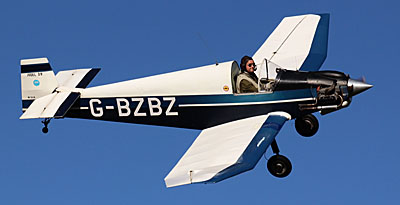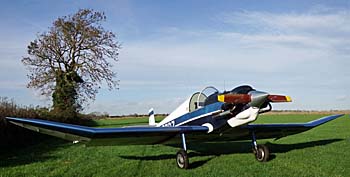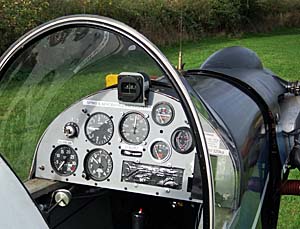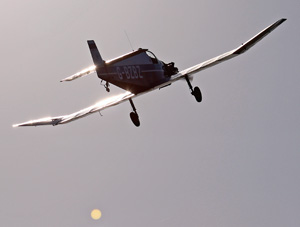




Crosswinds are best avoided if practical, and should certainly be considered with a degree of circumspection. As with most lightweight taildraggers the D9 has really been designed to be operated into wind and consequently its crosswind limits are quite low. In my experience, you would have to apply yourself to overrun the runway in a Bebé, although a strong crosswind could make it cheerfully run off the side, particularly on a hard-surface runway. Lightweight taildraggers don’t really go well with concrete and crosswinds, but as long as this is borne in mind Bebé is a delight to land. The rudder has enough authority to make directional control during the roll-out easy. Since buying the D9 I have become increasingly enchanted with this delightful little flying machine, as it is an aircraft in which the sensation of powered flight is distilled into just about its purest form. With a pair of stout wings to sustain you, the wind in your hair and a full 360° of visibility above the wings, it’s a truly fun machine in which to sail the sea of the sky.
Whether chugging along above England’s incomparable landscape on a warm summer’s evening at 501 feet, twisting and turning in a tight thermal, slaloming sinuously between billowing banks of spotless white cumulus or merely the simple pleasure of kissing the sun-warmed grass of a farm strip with a perfect three-pointer, my Bebé has reminded me why I learned to fly in the first place. One thing’s for sure. If you cost your air-time by the hour, power flying really doesn’t get much cheaper than a D9!


I want a D9 but you rarely see them advertised.
Where are you based David?
I greatly enjoy flying a Jodel!
I am in search for a Jodel D9 plans. I have had no luck so far. Is there anyone who would have the plans or where I could buy one? I would greatly appreciate.
Thanks for your attention.
Augustin
Where are you based Augustin?
Where do you find the plans for one of these ?
buy them on: https://www.avionsjodel.com/construire-fr/d9-bebe-jodel/
Had the joy of flying our club’s Bébé OO-19 yesterday. Lovely to even if a bit chilly at +2C…
Great stuff Ted – open cockpit?
I had a share in a Jodel D9 for several years. I’d get another share in a heartbeat. Fantastic aeroplanes to fly. You’ve got a nice version there.
Thanks Brian – I really like flying it! Cheers, Dave